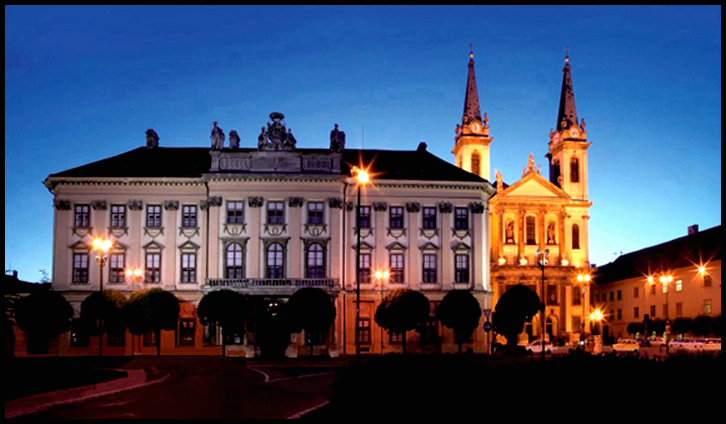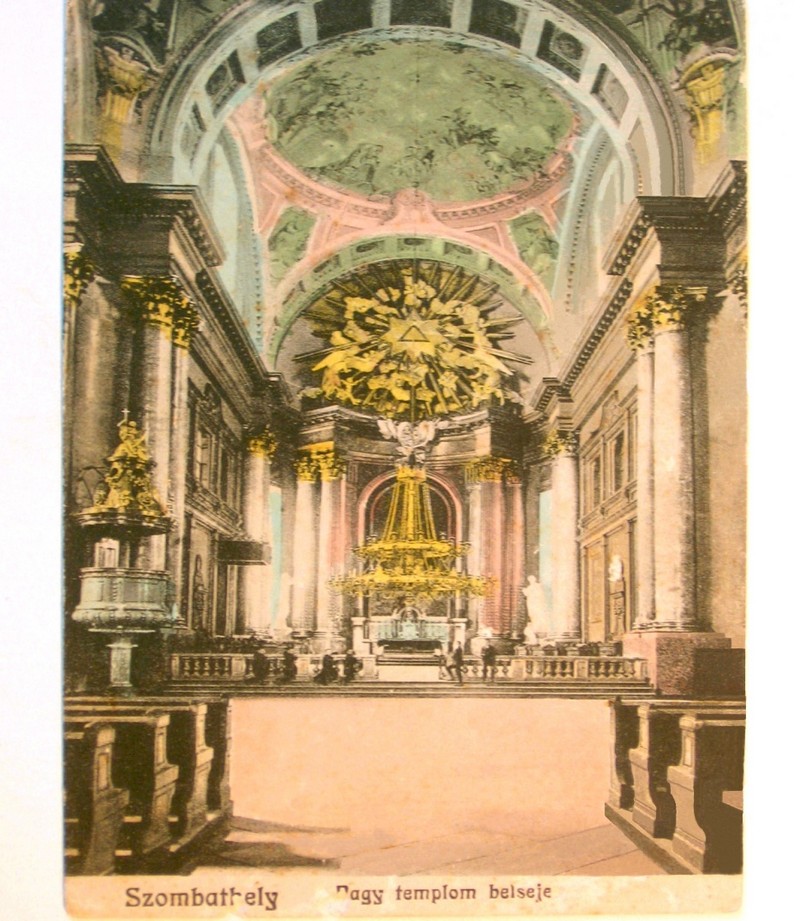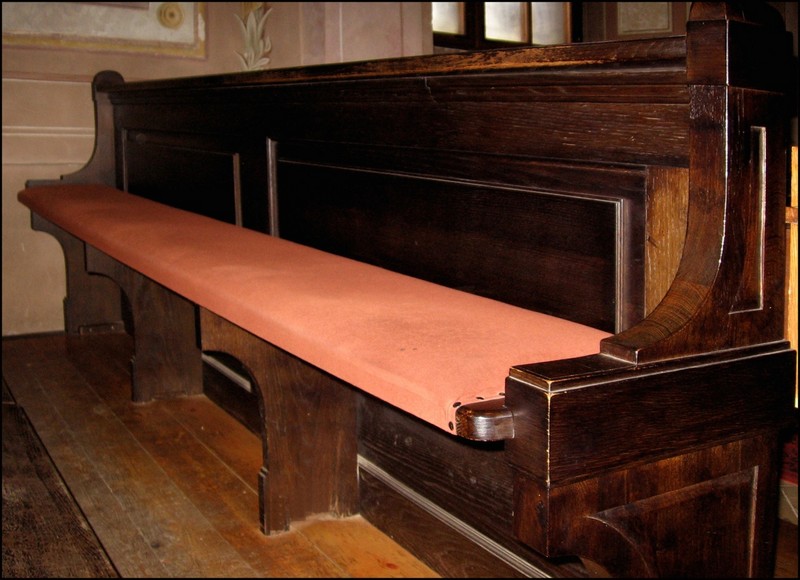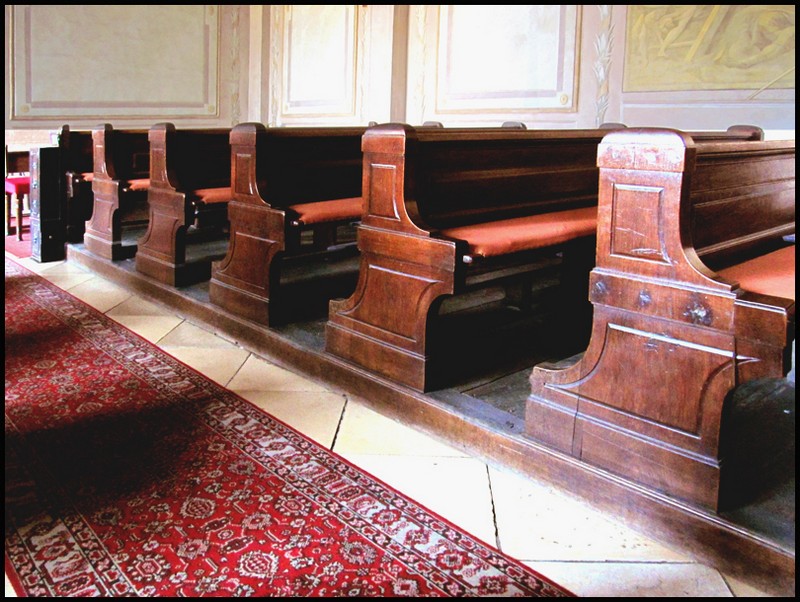
The "Cathedral in Photographs Album" was first posted on November 5, 2010 into Picasa and has been viewed by 10,181 viewers around the world since this public posting. Google has just announced the removal of all Picasa Images and Albums later in 2016.I have therefore saved all images, image data, and paragraphs as they were created many years earlier, and I will now rebuild this same content as Word Document pages in the months ahead. This content will now be hosted here.
I thank you for your interest in this history over these many years, and I will work as diligently as I can in the months going forward to insure that these images and history will be available 24/7 in the years ahead. I will also correct any errors in the descriptions that may have come to light since the original "post-up" dates in all of my albums. I may also try to improve the quality of all photo- graphs by using a cleaner version of the same image from my expanded collection here. Most of the text paragraphs should remain the same, however, if significant new information is now available, will update those paragraphs as needed.
The Author. (5-20-2016)

I begin this Album with a early evening photograph of the cathedral that was taken in August 2010. Although some of the lighting on the cathedral was not working at 8:40 pm this day, it was a majestic view against a blue/black background of the evening sky.
In the following pages, I will bring both “old” and “new” images together, to give the viewer an awareness of both the architectural beauty of the cathedral today, with five examples of bomb damage that remain from 1945. The horrific historical consequences of past years still remain visible today, in several small areas within the cathedral walls.

We now look back in time to other images about the Cathedral that have surfaced on the World Wide Web, or were captured from printed material over several years of summer visits to the city. The following images and notations were originally posted in 2010, with new images and details being added at this time.

A television screen grab from years ago. (possibly an colored water painting - artist is unknown)

This old black and white early Photograph of the Crossing was printed on card stock and then colorized by hand. It would be an image from the early 1900s before the “electrification” of the cathedral. The four Seminarians on the left (all kneeling) and the two Priests on the right, may have come into the cathedral for a “class lesson” from the Seminary next door, or were just simply painted in by the artist. The “painting in” of color was probably driven by the quantity of images to be “colorized” each day for marketing purposes. The first Seminarian (kneeling at the left) at the railing, was missing his upper torso and head, and this was fixed via Photoshop.
The condition of the original image was very poor and showed extensive “foxing” and degradation of the card stock along the right hand edge. I have restored the right side of the cardstock and its missing image and refreshed the the colors which were badly faded by age. Notice that the brush strokes applied by the artist were again quickly done.
(My closest photograph to the above view can be found below.)

The three large ornate candle chandeliers must have been beautiful at night. The radiating glow of all the candles at the evening service would have been a memorable experience for many years to come.
The candle Chandeliers in the Sanctuary, Crossing and Nave isle were manufactured by a company in Vienna called Radax L and were designed specifically for the cathedral at a cost of more than 25,000 Crones or (Korona). They were installed in 1913 before the cathedral was electrified and they could be raised or lowered via a cable through the ceiling above to ease in replacement of the older candles.
Additional lights (although much smaller) were also made by the same company and installed as electric “Side Lights” along the walls of the Transepts and Nave for additional lighting from 1928 – 1930 when the cathedral was then electrified. These four light fixtures can be noted with raised relief rings around them on the walls in the bomb damage photographs as well as in modern pictures from earlier times.

“The Kober/Dorner/Peppert organ was ordered in 1808 and was completed in 1814. It had been expanded many times over the ensuing 131 years and was last played on the morning of March 4, 1945. Full details can be found on the Web Site.
Because the Urbarium* of 1593 makes mention of the organist of the castle church in Szombathely, it seems unquestionable that there was an organ in the Romanesque style at the old Virgin Mary church. It must have been built around the time when the chapter moved from Vasvár to Szombathely. (1578) When the very generous patron prelate György Szécsényi rebuilt the church in baroque style in 1665, he made sure that there would be an organ along with other interior decorations and furniture. This is mentioned in a 1674 document of a visit by one Tormásy (notation 11) which says: “mediocre organum” meaning a medium size organ without great features. Szombathely’s last bishop from Győr, Count Ferenc Zichy, went even further and after the 1744-45 renovation of the church installed another “new” organ. Batthyany wrote about this organ in his notes during his visit. He says it was “magnum et elegans,” meaning that its size was suitable to the size of the church, and it was beautiful and elegant, and maybe decorated with carved statues, just like Zichy’s organ in Győr. However the bishop did not pay for the organ himself, but deferred the cost to the cathedral chapter and the parish. Because later, an argument developed between the chapter and the parish regarding that who has the right to use the big organ and it can now be deduced that both the small and the big organ were in use at the time. Neither party could possibly imagine a solution to the argument where one of them is left totally without an organ.
The beautiful large organ, a valuable example of Hungarian organ building, was destroyed in 1792 when the city’s first bishop János Szily ordered the demolition of the castle church. However bishop Szily had no time to build a new organ for his new cathedral, because before the construction and the interior decoration were completed, he died in 1799. During the term of his successor Ferenc Herzan very little was done about the completion of the cathedral because of the French wars. It was only under bishop Lipót Somogy (1806-22) that the work on the cathedral was continued. At this time the building of a new organ was started. In the meantime a small organ from the Calvary church was used for worship.
In connection with the interior renovation undertaken by bishop Somogy in 1808 a new organ was ordered. The bishop gave the job to Ignac Kober, an organ builder from Vienna. Kober was not unknown in Hungary. He built the organ in the cathedral of Pécs in 1805-1806.
Kober’s plan called for a two manual 34 variation organ. The price he asked for was 13,500 Ft. He started the work, but died in 1812. The organ at that time was less than half built. Kober’s son was 17 years old at this time. He had neither experience as an organ builder, nor did he command respect in the eyes of his father’s assistants. So it is understandable that more and more complaints arrived to the bishop about their work. Finally bishop Somogyi turned to Albert Gáspár Dorner , an organ builder from Szombathely, and in 1812 made a contract with him to finish the organ. Dorner was born in 1780 in Oberwöhr, Bavaria. He learned organ building in Vienna. He came from there to Szombathely in 1803 and became a citizen in 1807.
As soon as he took over the work he saw that Kober’s assistants cut the pipes too short, causing the organ to play half a note higher than usual. Also, the keys moved with some difficulty. Dorner corrected all these defects and finished the work in 1814.
(More information and specifications on the old and new organ can be found here.)
Urbárium of 1767 now follows below, with a sectional view of Steinamanger (or old Szombathely). Of particular interest is the Foter, houses with green back yards, the Cathedral complex and in the fields outside the city, a train Station with just two tracks.


An enlargement of the previous “Dorner” organ and decorative casement that was all totally destroyed in the bombing of March 4, 1945.

During the powerful American bombing raid of 1945, the church received much damage from four chained-mine bombs. The organ was destroyed. With great sacrifice from the faithful, the cathedral was rebuilt and rededicated by Cardinal Mindszenty in 1947. The interior at that time was totally without any decoration. Major renovation on the interior started in 1990 under the direction of the bishop and supported by the city government, and was completed in 2004. The church is on the National Registry of Historical Buildings.
The story of the organ 1999: “The Aquincum Organ factory made the organ in Budapest. They used the pipes of the Sacred Heart church in Augsburg. These pipes where made by G.F. Steinmeyer and Cie (Ottingen) in 1915. In memory of the destroyed organ, the new imposing 12 meter tall redwood organ cabinet is decorated with statues found in the rubble after the bombing. Inside the organ the pipes are arranged on 4 levels. Some of the large pipes situated in the facade are 6 meters tall.
In the Spring, in 1948, Joseph Adam, an organ builder from Szombathely, received an order for a temporary small organ. This organ had 6 variations. The organ was finished for Christmas of the same year and provided the music for the church up to this day (1977).”
(More information and specifications on the old and new organ, can be found here)

The current three manual console now installed.



Survivors of the original Pews (still on wood platforms), can be seen today in the Madonna Chapel. All of the Nave Pews were totally crushed by the bombing.

In the Madonna Chapel, the pews remain for us today, while in the Nave, many more of these very same pews were all destroyed in March of 1945. Here one can sit in silence and reflect for a few moments on the history that has taken place at this cathedral in past years, and to say a prayer now, as have many other pilgrims before you have done for well over two hundred years. Try it, and your faith will remain linked to this very Cathedral, and it will be made even stronger in the years ahead knowing now of its past history.

At the Entry to the Madonna Chapel in the north Transept you can still see bomb fragment damage to the door Moldings and the Railing of the St. Martin Altar a few feet away. A stark reminder of the March 4th. bombing of the Cathedral in 1945.

The entry doors to the Madonna Chapel in the North Transept. The "relief work” and ornamentations over the door were never replaced. A pre-war photograph is not available at this time and will be added to this album when and if one is found. Photographs above are from 2006.
Above the doors, an outline of an "relief" above the ledge shows where a sculptured image had been once mounted. Also missing were two smaller sculptures missing from their pedestals on the left and right.

The scroll on the left side of the ledge has been heavily damaged by a bomb fragment. The angle of the damage would indicate an object flying downward and from a direction above the Crossing/Nave area. This would perhaps implicate the most forward bomb in the Nave exploding above the pews. This shard from the bombs casing hit the scroll in the upper area fracturing away the lower portion of the stone relief work. Disposition: unrepaired and a reminder of March 4, 1945.

Collateral damage to the right door molding (perhaps from the same bomb that hit the scrollwork in the previous image). There is a feeling again of a downward force in the breaking of this molding. No bomb damage photograph of the doors themselves has surfaced (since 2006) and it could be assumed that these original doors have survived without damage, (as they may have still been opened on this Sunday morning), as this was not the case with the Sacristy doors in the south Transept being closed at the time of explosion.

In front of the Chapel doors the Communion Railing of marble also show signs of fragment or secondary damage from flying debris of the explosion from the most forward bomb in the Nave.
Repositioned now as a railing around the St. Martin Altar, this railing may have been installed originally at the top of the steps to the Sanctuary with a metal gate and thus received the direct impact from the most forward bombs explosion and flying fragmentation. In this side railing position now, the railing would have been somewhat protected from the blast effects in 1945. The top view of this repair (one of several images), shows the repairs to the edge and top surface of the railing would show hard impact of flying steel casing from the bomb hitting the surface from an angle above the railing and traveling at a high rate of speed. (again this may speak to its former location at the top step of the Sanctuary). Many locations of these repairs to this railing can be observed now by visitors to the cathedral.

A Cherub’s face was permanently disfigured by a fragment from the bombs that fell in 1945 and was left intentionally unrepaired. A reminder to all who may visit here, or in the years ahead, of the horrors and losses that war brings. Not only to this House of God, but to the lives of worshipers of past years who had prayed here, and the many who now come to worship in these present times, and for all those who will follow in our footsteps going forward, the Cherub always remains “watching”. He sees all who enter here, but only a very few will ever know of where He is.
